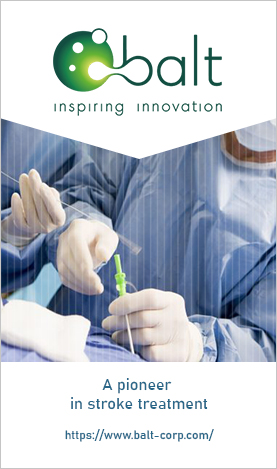Evaluation of Intracerebral Haemorrhage’s Surface Area Using Artificial Intelligence in Computed Tomography
DOI:
https://doi.org/10.32896/cvns.v4n3.1-13Keywords:
Artificial intelligence, machine learning, Radiology, Neurology, CT BrainAbstract
Introduction: AI-based techniques can be used to localize and measure the intracerebral haemorrhage (ICH) in computed tomography (CT). This study aims to develop an automated detection algorithm with higher sensitivity in ICH evaluation in comparison to the conventional method. This indirectly influences the patient’s prognosis by reducing the risk of delay or misdiagnosis.
Methods: Selected 50 CT brain images with primary ICH were used for three different measurement approaches including the conventional Kothari method (Conventional), AI-based method (A.I.), and manually marking by the radiologist, which is the ground truth (G.T.). In the automated system, a convolutional neural network (CNN) is used to localize the ICH, followed by a thresholding technique to segment the ICH, and finally, the measurements are computed. The segmentation performance is measured using Dice similarity coefficient. The automated ICH measurements are compared against the ground truth (A.I. vs G.T.). Concurrently, the ICH measurements calculated using the conventional method are also compared against the ground truth (Conventional vs G.T). The t-test analysis is performed between the sum squared error (SSE) of ICH measurements from the automated-ground truth and the conventional-ground truth.
Results: The mean volumetric Dice similarity coefficient for the automated segmentation algorithm when tested against the ground truth, is 0.859±0.135. The t-test analysis of the SSE between conventional-ground truth (median=5.45, SD=3.96) and automated-ground truth (median=0.73, SD=0.78) achieved p-value < 0.001 (p=5.10E-9).
Conclusion: The automated AI-based algorithm significantly improved the ICH surface area measurement from the CT brain with higher accuracy and efficiency in comparison to the conventional method.
References
Caceres JA, Goldstein JN. Intracranial hemorrhage. Emergency medicine clinics of North America. 2012 Aug 1;30(3):771-94.
Tharek A, Muda AS, Hudi AB, Hudin AB. INTRACRANIAL HEMORRHAGE DETECTION IN CT SCAN USING DEEP LEARNING. AJMedTech. 2022 Jan 31;2(1):1-8.
Bujang MA, Baharum N. A simplified guide to determination of sample size requirements for estimating the value of intraclass correlation coefficient: a review. Arch. Orofac. Sci. 2017 Jan 1;12(1).
Danovska MP, Alexandrova ML, Totsey NI, Gencheva II, Stoev PG. Clinical and neuroimaging studies in patients with acute spontaneous intracerebral hemorrhage. J of IMAB–Annual Proceeding Scientific Papers. 2014 Mar 28;20(2):489-94.
Delcourt C, Carcel C, Zheng D, Sato S, Arima H, Bhaskar S, Janin P, Salman RA, Cao Y, Zhang S, Heeley E. Comparison of ABC methods with computerized estimates of intracerebral hemorrhage volume: The INTERACT2 study. Cerebrovasc. Dis. Extra. 2019;9(3):148-54.
Zamani NS, Zaki WM, Huddin AB, Hussain A, Mutalib HA, Ali A. Automated pterygium detection using deep neural network. IEEE Access. 2020 Oct 13;8:191659-72.
Indolia S, Goswami AK, Mishra SP, Asopa P. Conceptual understanding of convolutional neural network-a deep learning approach. Procedia computer science. 2018 Jan 1;132:679-88.
Zhang Z. Derivation of backpropagation in convolutional neural network (cnn). University of Tennessee, Knoxville, TN. 2016 Oct 18;22:23.
Zhou X. Understanding the convolutional neural networks with gradient descent and backpropagation. JPCS. 2018 Apr 1;1004(1): 012028)
Waite S, Scott J, Gale B, Fuchs T, Kolla S, Reede D. Interpretive error in radiology. AJR. 2017 Apr;208(4):739-49.
Brem RF, Hoffmeister JW, Zisman G, DeSimio MP, Rogers SK. A computer-aided detection system for the evaluation of breast cancer by mammographic appearance and lesion size. AJR. 2005 Mar;184(3):893-6.
Tharek A, Muda AS, Huddin AB, Rahim EA, Git KA, Sabri MI, Abdullah R. Padimedical: Medical Image Sharing Portal with DICOM Viewer–User Experience. International Journal of Human and Technology Interaction (IJHaTI). 2020 Oct 31;4(2):1-4.
Benjamens S, Dhunnoo P, Meskó B. The state of artificial intelligence-based FDA-approved medical devices and algorithms: an online database. NPJ Digit. 2020 Sep 11;3(1):1-8.
Published
How to Cite
Issue
Section
License

This work is licensed under a Creative Commons Attribution-ShareAlike 4.0 International License.







